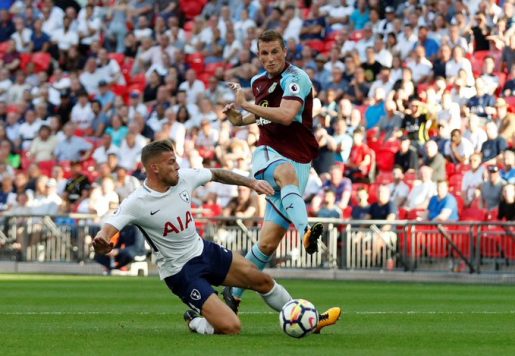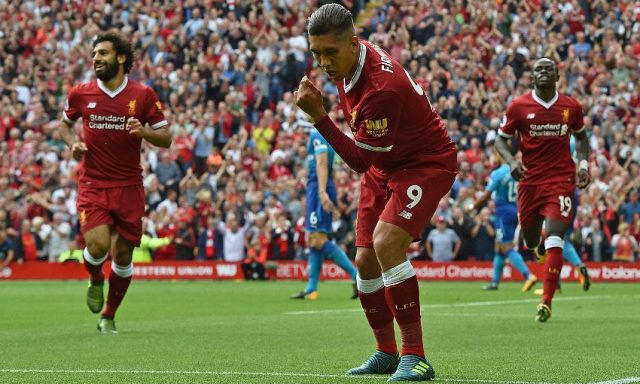I am seriously beginning to wonder about post game analysis and the pundits that preside over them.
It actually started last season, when Danny Murphy (ex-Liverpool, ex-Spurs) questioned Liverpool’s use of James Milner – the left back – as designated penalty taker “despite the presence of so many attacking players” on the team.
You’d think an ex-pro would know better. Especially one who himself took the penalties while playing in the same side as prolific strikers like Michael Owen and Robbie Fowler. Of course, there’s also the small matter that Milner, until last season, had played mostly as an attacking player over a 15 year career at Leeds, Newcastle, Aston Villa, and Man City, clubs at which he had at various times taken penalties as well.
Murphy made it sound like the weirdest decision ever. For my sanity, I had to put it down to a lack of preparation.
But what got my attention this week was some of the analysis that followed Liverpool’s 1-1 draw with Burnley at Anfield. It wasn’t so much that it was mostly negative – that’s to be expected when a defensive mistake results in another silly goal and 35 shots at goal yield just the one goal. It was more the details – the diagnosis, if you will – that furrowed my brows.
It’s not unusual that the final result often colors the analysis – you know the type: if you win, you’ve played well; if you lose, you’ve played badly.
Yet, for some reason, I expect a bit more nuance and balance from pundits, especially if they have also actually played the game. Fool, me.
Take Danny Dichio, on Sportsnet. He criticized Liverpool for playing too much on the wings and not showing enough combination play through the middle. Now, Dichio, a former Premier League striker (QPR) and now a coach with Toronto FC, clearly knows a thing or two about the game. But it’s hard not to take this summation as result driven and after the fact. They didn’t win, so it was wrong.
For one thing, I sat through many game analysis programs – much like Dichio’s – last season, listening to pundits lament Liverpool’s lack of width as a reason for not breaching deep-sitting defenses much like Burnley’s. Those pundits – ex-pros like Dichio – surmised that Liverpool’s attacks were too easy to defend because they were confined to the width of the penalty box and that they would need to use the spaces out wide to make any headway.
So which is it? Stay wide or work through the middle? It seems it depends on the result on the day. Can a manager ever be right if the result doesn’t go their way?
Now, Dichio’s reasoning was that Liverpool just didn’t have the personnel – tall center forward in the mould of Peter Crouch – for wing play and crosses to be effective.
But that ignores two things. First, a lack of height isn’t necessarily a deal breaker with regards to crosses. Didn’t Gabriel Jesus twice find the net with headers (one disallowed for offside) against Liverpool at the Etihad a week earlier? Didn’t Sergio Aguero head home the first of his three at Watford on Saturday? They are 5ft 9 in. and 5ft 8 in. tall respectively. In actual fact, Sturridge did pick out Mo Salah (5ft. 9 in.) for headers – twice – in this same Burnley game. And Sturridge himself – at 6ft 2in. – is no dummy with crosses: it’s not his strongest suit but 11 headed goals from his 47 Premier League goals for Liverpool suggest he’s pretty useful with his noggin.
Second, crosses need not be high – low balls cut back from the goal line or zipped across the face of goal can be just as, if not even more, dangerous than that high cross to a burly target man.
Besides, Liverpool created a handful of chances from crosses – high and low. Right back Trent Alexander Arnold alone created seven chances on the day – more than any other player in the PL over the weekend. One of those was unluckily deflected off the crossbar by Dom Solanke five minutes from time. Another more routine cross – lofted into the box by Milner – produced another chance, for Alexander-Arnold whose scuffed half volley was saved by Pope. And there were those two crosses – whipped in from the right by Milner and Alexander-Arnold – that Sturridge just failed to react quickly enough to convert.
The other criticism of Liverpool’s play that falls squarely in the “after the fact” category is the whole issue of “shots from distance”.
Don’t get me wrong: obviously, shots from outside the box have a lower probability of resulting in goals – as Sean Dyche was eager to remind everyone afterwards, in praise of his side’s defending. Yet, I wonder if he would have uttered those words so gleefully had one of those “low risk” screamers found the top corner.
I know – it’s ifs and buts – yet Everton manager Ronald Koeman would have been happy for Valencia to shoot from 20 yards at Old Trafford on Sunday….until his shot flew past Pickford to give United a decisive lead. Likewise Rafa Benitez at Newcastle, when Shaqiri opted to shoot from 25 yards out….and found the bottom corner.

Beyond that, let’s consider the identity of the men firing from distance. Emre Can only scored 5 goals last season, but two of them were from outside the box – including, funny enough, the match winner against this same Burnley team. The aforementioned Sturridge, injury troubles aside, is as adept a striker of the ball as any in the Premier League and previous goals over the years – Stoke, Man City and that exquisite chip against WBA – all attest to his prowess from distance. And of course, there’s Coutinho, still finding his range in his first start of the season, yet, in his time at Liverpool, he’s scored more goals from outside the box than any other player in the Premier League. Bar none.
I understand the probabilities – Expected Goals (xG) models have made sure of that – but on a day when a well-drilled Burnley defense gave little away, would it not have been foolhardy to not have these chaps have a pop every now and then? After all, nothing ventured, nothing gained.
Bottom line: That a plan didn’t pan out doesn’t necessarily make it wrong – especially in a low scoring sport in which fine margins can sometimes separate success and failure.
Post-match analysis should reflect that a lot more than it seems to right now.









